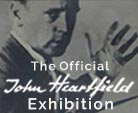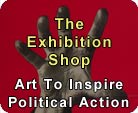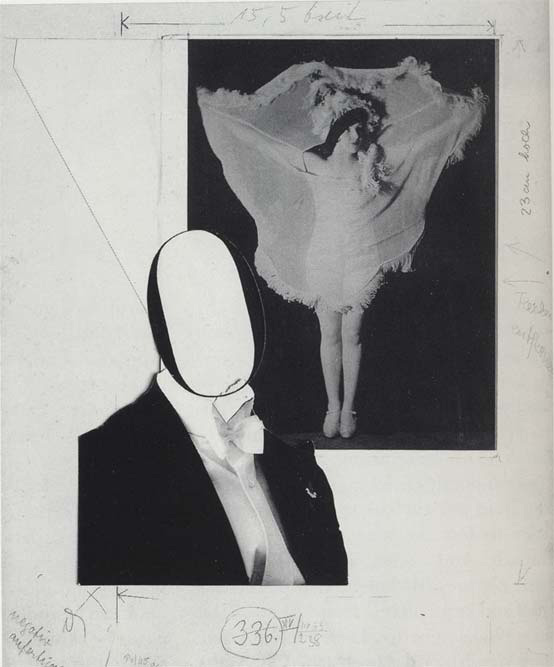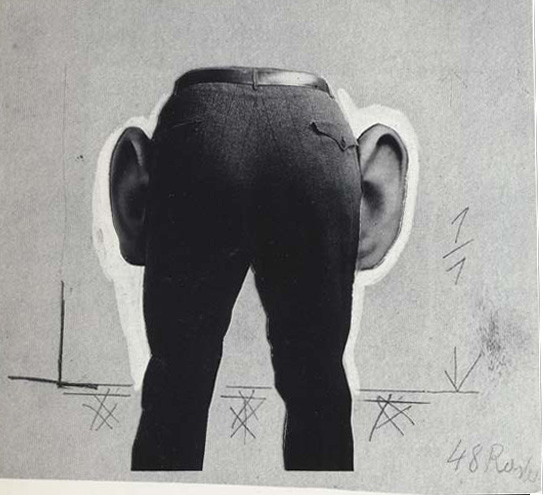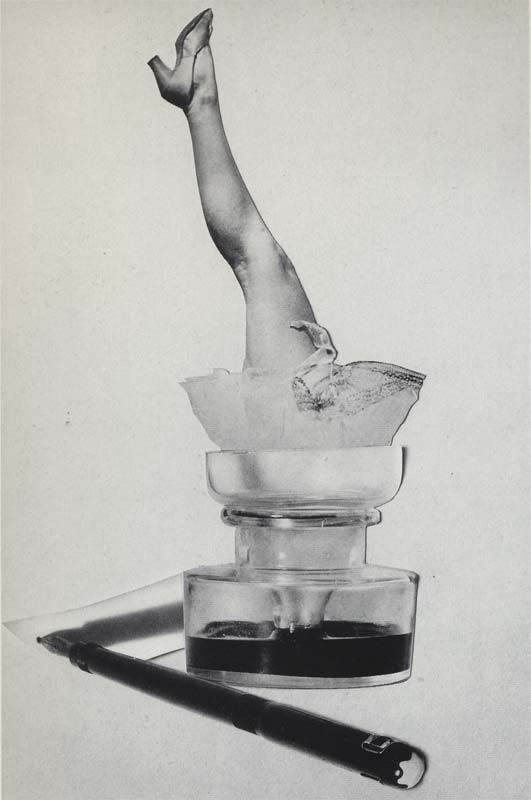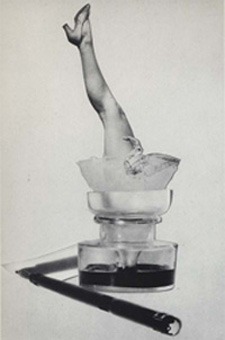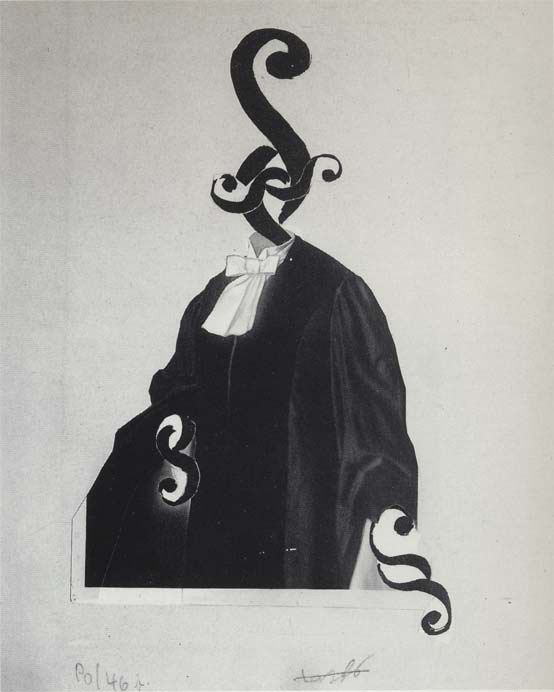
Famous German Dada Becomes Weimar Republic Images. Trump Politics Come Straight From Historic Rise Of Fascism In Europe.
CLICK IMAGES BELOW TO EXPAND OR VIEW SLIDESHOW.CLICK VIEW PAGE FOR THE FULL PAGE ABOUT AN IMAGE.
At first glance, viewers might think the twisted head and hands of the legal figure resemble musical staffs. It gives the impression the mind and the actions of a judge have been twisted into some strange sense of justice. This Weimar Republic Heartfield collage shows a faceless aristocrat ogling a flapper. The art appeared on page 101 of the Tucholsky - Heartfield collaboration Deutschland, Deutschland, über alles. This iconic piece of Weimar Republic graphic design appeared on page 178 of the hugely successfully Kurt Tucholsky - John Heartfield collaboration Deutschland, Deutschland, über alles (Germany, Germany, Above Everything). The montage and its caption might be seen as somewhat sexist at first glance. Heartfield inserts a woman's leg into an ink bottle to make "sweet ink." However, the opposite is true. Heartfield is commenting that "sexy news" distracts the public from important political and social issues.
I Only Know Legal Paragraphs
A good friend of the exhibition, Phil White, made it clear that the twisted head is actually a montage of symbols that appear in legal paragraphs. This gives Heartfield’s collage an entirely different perspective. What is right and wrong in a twisted society is not important. It only matters what is legal. In other words, what are the rules. For example, Donald Trump wants judges to agree that torturing captives and killing women and children civilians is legal. Therefore, it must be right.
The symbolism in this collage reveals both the depth of John Heartfield's knowledge of imagery and symbolism, as well as his ability to use that knowledge to make a visual statement.
They Scream for Satire
Heartfield's graphic designs perfectly fit the words of Tucholsky's satiric masterpiece. Deutschland, Deutschland, über alles was an instant success in Weimar Republic, Germany. Heartfield's images got notice from the largest advertising agencies in Berlin. They offered him high-level positions. He turned them all down. He needed to be independent. He had to do the type of artwork he was born to create.
Heartfield had always wanted to be an artist. He thought he failed as a painter of landscape paintings. He burned all of them except one. On the other hand, his stunning book covers for the publishing house he owned with his brother, Wieland Herzfelde, made his reputation in Berlin. But he wanted something more than applause from critics or high-paying job offers from ad agencies. His art was “a weapon” to fight ignorance, bigotry, and injustice. Heartfield felt any injustice was a personal attack against him.

A Berlin Saying
Released in 1929 by the Heartfield-Herzfelde publishing partnership Neuer Deutscher Verlag, Tucholsky's picture-survey was a devastating critique of Weimar Republic society.
Placing on the sides of trousers looks like a deceptively simple Heartfield photo montage. However, to fully appreciate the image, note the use of shadow and the meticulous placement of elements. Heartfield was a perfectionist. He brought his original work to the reproducers after hours of solitary work. He would rush home with their product and then rework the image again and again.
Sweet Ink
Consider the amount of news coverage of Donald Trump's comments about his behavior around women. Also, his alleged treatment of female business associates. His words and actions seemed to make Trump a less than ideal choice for president of the United States. However, those news reports also helped to minimize his comments on race and his associations with white nationalist hate groups. It allowed his supporters to forget that he had no governing experience. They glossed over the fact Trump was totally unqualified to be president.
Trump won the popular vote of white women even though his words and his actions towards women would have revealed any other candidate to be unfit to serve. Women who voted for Trump focused more on his claim that he would be the most powerful force against terrorism. White women voters seemed willing to overlook his misogynist behavior because of "sweet ink."

Famous German Dada Leads To Classic Weimar Republic Images
The famous Dada collages John Heartfield created as a member of Berlin Club Dada can be viewed as a foundation for Heartfield’s later work for Kurt Tucholsky’s irreverent picture-survey of 1929 Weimar Republic society Deutschland, Deutschland, über alles (Germany, Germany, Above All).
Heartfield’s 1918-1920 Dada pieces were never random placements of mix of mixed media elements. Each piece of media was carefully chosen. Then they were placed in the whole to provide the viewer with a message in one visual jolt.
The images Heartfield created for the interior of Deutschland, Deutschland, über alles are satirical stories. They’re a perfect blend for Tucholsky’s satiric destruction of the German Weimar Republic mentality that helped Germany fall under the control of the authoritarian leader Adolf Hitler.
Heartfield’s montages take symbols and images of Weimar Republic society and use them to tell his story of how people look to a strong leader to solve problems while they ignore policies that lead to a fascist government.
Tucholsky’s words and Heartfield’s collages could apply just as easily to the rise of Benito Mussolini in Italy. Though Italy fought against Germany in World War I, many Italians, like Germans, felt slighted and victimized by the disastrous Treaty Of Versailles that ended the war. The same reasoning could apply to the victory of Donald Trump in the 2016 American presidential election. Many Americans were hurting and felt ignored. They turned to the authoritarian tone in the words of Trump. They supported him without caring about his racist, bigoted, and misogynist statements.
Deutschland, Deutschland, über alles was wildly successful when it was published by Neuer Deutscher Verlag in 1929. John Heartfield received lucrative offers from some of Berlin’s largest advertising agencies. He turned them all down. Perhaps he knew what was coming. He needed to be free to use his art “as a weapon.”
Heartfield’s stunning visuals were not simply an ideal partner Tuchosky’s devastating prose. They were the models for Heartfield’s famous anti-fascist and antiwar photo montages that attacked fascism, Adolf Hitler, and The Nazi Party. Montages that made Heartfield number-five on the Gestapo’s Most Wanted List.
